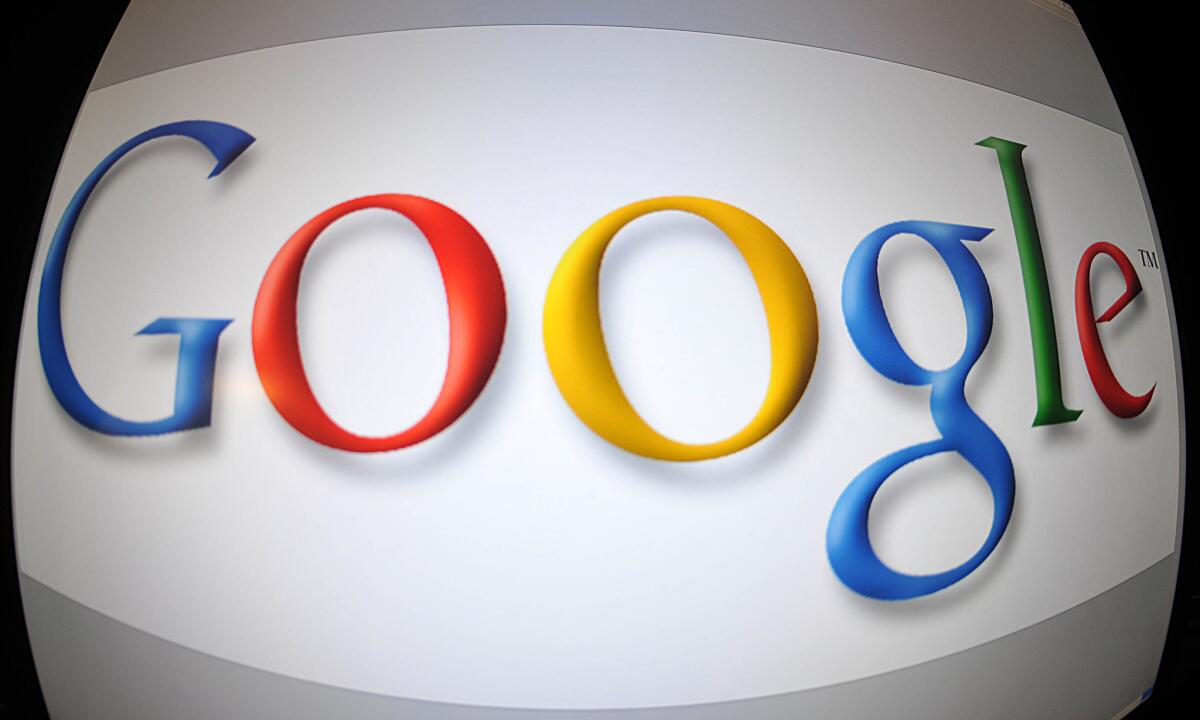A non-SOPA broadside aimed at online piracy hotbeds

- Share via
After months of talks with rights-holders, operators of some of the largest online advertising networks announced the steps they’ll take to try to cut off online piracy hotbeds from the flow of marketing dollars. Their voluntary best practices drew praise from the White House and a mixed reaction from Hollywood studios and music companies, reflecting how incremental the moves seem to be.
Nevertheless, the steps, which eight advertising networks have endorsed, mirror a move by major brand advertisers to ensure that their messages not only reach the intended audience but do so in the right context. Led by WPP’s GroupM, advertising agencies are increasingly asking networks not to serve ads to rogue sites. Meanwhile, new companies such as WhiteBullet and Veri-Site are emerging to help brands keep their advertisements away from unseemly sites and inappropriate content.
In other words, the market is responding to the problem even without the controversial legislation -- known by the acronyms SOPA and PIPA -- that the entertainment industry sought in vain a year and a half ago. That’s not to say that the response will stop the unauthorized downloading encouraged by such outlets as the Pirate Bay, or that it will be more or less effective than a mandate out of Washington. It’s just to note that major brand advertisers -- the ones who pump the most money into the ecosystem -- seem to be taking copyright holders’ complaints seriously.
Clearly, rights-holders have become more vocal about how ad dollars are supporting online infringers. See, for example, how David Lowery (of Camper van Beethoven and Cracker) has been highlighting the “exploitation economy” on his blog, the Trichordist. And they’ve gotten a boost from USC’s Annenberg Innovation Lab, whose monthly “advertising transparency reports” have documented the networks serving the most ads to suspected piracy hotbeds.
The new best practices -- developed by AOL, Google, Microsoft and Yahoo, and endorsed by 24/7 Media, Adtegrity, Condé Nast, SpotXchange -- leave much of the enforcement burden on copyright holders, just as the 1998 Digital Millennium Copyright Act does. The document released Monday calls for ad networks to bar sites that are “principally dedicated to selling counterfeit goods or engaging in copyright piracy and have no substantial non-infringing uses,” but doesn’t require or even encourage them to monitor the sites that receive their ads. Instead, it states that networks should give copyright holders an easy way to alert them about such sites.
When they receive complaints, ad networks are expected to investigate whether the site is dedicated to piracy. But even if a network determines that the site does meet that description, the best practices leave it up to the network to decide how to respond. Says the document: “An ad network may take steps including but not limited to requesting that the website no longer sell counterfeit goods or engage in copyright piracy, ceasing to place advertisements on that website (or pages within that website) until it is verified that the website (or pages within the website) is no longer selling counterfeit goods or engaging in copyright piracy, or removing the website from the ad network” (emphasis mine).
Such flexibility leaves the agreement seemingly toothless, but it’s necessitated by the fact that piracy happens on legitimate sites as well as rogue ones. It’s easy to find pirated material on YouTube, but that doesn’t mean Google should stop serving ads to the entire site. Conversely, authorized copies of works can be found on the Pirate Bay, but that doesn’t necessarily mean the site has “substantial” non-infringing uses.
And there’s a lot of gray area between YouTube and the Pirate Bay. Simply trying to define what a rogue site is triggers a heated debate over what constitutes “substantial” non-infringing use and whether to hold index and search sites responsible for the infringing material that’s overwhelmingly popular among their users. There’s also a vigorous debate over the distinction between infringing and fair uses of copyrighted works, and copyright holders have repeatedly erred on the wrong side of that calculation (see, e.g., the case of the YouTube video featuring two young children cavorting to a snippet of a Prince song). That’s why Gigi Sohn of Public Knowledge, a group that advocates for stronger fair-use protections, said Monday, “It is now time for the content community to develop its own set of best practices to ensure that rights of Internet users and intermediaries are protected in their efforts to enforce their copyrights.
The voluntary nature of the best practices also will reduce their effectiveness. The first networks on board are among the ones who’ve been most responsive to copyright holders (one, Condé Nast, is actually a publisher serving ads to its own sites). Their ranks include none of the 10 networks identified in the most recent Annenberg Innovation Lab report as serving the most ads to supposedly illicit sites.
Nevertheless, it’s encouraging to see at least some top ad networks saying that they too have a stake in the battle against online piracy. As John Montgomery of GroupM put it, when networks serve ads to rogue sites, it confirms advertisers’ fear that the Internet is the Wild West and their brands aren’t safe there. The result, he said, is that they spend less on advertising online than they would otherwise.
And if the best practices spread broadly through the industry, they would give rights-holders a potentially more powerful tool to combat infringement than the DMCA’s notice-and-take-down provision. Instead of having to alert networks to every link to a copyrighted song or movie, as in the DMCA, they could seek to remove links en masse by cutting sites off from the dollars that sustain them.
That’s the best-case scenario, not the likely scenario. Jonathan Taplin, who directs the Annenberg Innovation Lab, noted that when major networks clamp down on pirate sites, less scrupulous ad networks invariably pop up to help fill the advertising space there. That’s because those sites’ prime audience -- 18- to 27-year-old males -- is a “prime demographic for all sorts of companies,” Taplin said.
Of course, the companies that are happy to advertise on bottom-feeder websites, such as escort services and high-interest lenders, don’t pay nearly as much for ad space as the Chevys and Coca-Colas of the world. Yet they seem to pay enough to support the Pirate Bay.
Ultimately, what the networks are doing may prove less effective than what brand advertisers and their agencies are starting to do for themselves.
Montgomery of GroupM said the advent of social media made advertisers increasingly sensitive to the placement of their pitches. Initially, they were concerned mainly about their ads being placed next to pornography or hate speech; more recently, he said, they’ve worried about appearing to support copyright infringement.
About a year and a half ago, GroupM created a system to stop its clients’ ad dollars from reaching infringing sites. The company sends a continually updated list of about 3,500 rogue sites or pages to networks with instructions not to permit its advertisements from appearing there. It also does audits to check compliance with those instructions, Montgomery said.
“We’re not trying to reduce the spend on the Web,” he said. “We’re just trying to direct it to legitimate sites.”
The next step from GroupM is to enlist a technology company to help identify rogue sites and develop a way to resolve disputes with those that host infringing material. Once the technical issues are ironed out, Montgomery said, other agencies are likely to join in the effort.
Recognizing the market opportunity, four or five tech start-ups have emerged in the last six months to offer advertisers a way to assure that their pitches go where the companies want them to go, Taplin said.
ALSO:
California, catch the next big energy wave
John XXIII and John Paul II: Righteous popes
Daum: Rethinking the Cleveland kidnapping narrative
Follow Jon Healey on Twitter @jcahealey
More to Read
A cure for the common opinion
Get thought-provoking perspectives with our weekly newsletter.
You may occasionally receive promotional content from the Los Angeles Times.










